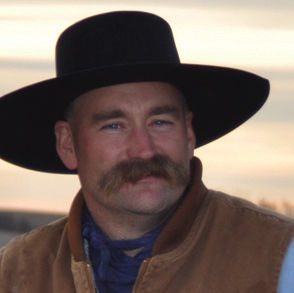Beyond taste, beef improves life
I just returned home from a tremendously inspirational meeting of young families in agriculture. I feel quite privileged to have been asked to speak at the Missouri Farm Bureau Young Farmers and Ranchers convention in Osage Beach.
I am not sure I can explain how exciting it was to mingle and speak to a group with so many toddlers on hand. It is that enthusiasm and chattering of the little farm people that really drives me to speak up for our industry. I was also reminded of how proud Missourians are of their cattle, especially now that they have regained the rank of the No. 2 cow-calf state in the nation.
While Missouri is a great cow-calf state with many acres that really need to be cultivated for crops, that ruminant animal, the cow, can graze the hills and hollers and convert the otherwise useless forage acres into the essentials of life. It is interesting to note that I was hanging with these proud cattle families the same week that it became widely known that beef-producing companies are investing in lab-grown meat. In fact, it is just one week after the buzz at the Cattle Industry Convention was all about “fake meat.”
Let me change the discussion here a bit. Answer this question to yourself: Do you support science and technology as a way to feed and clothe the ever growing population? I’m pretty confident that you just said, “Yes.” In fact, we all support that because that is what has moved us from needing 5 acres to feed every person in the United States for a year in 1900 to today where it requires less than a third of an acre to feed one person for a year.
So if you agree that science is the path forward, how can you argue with taking a drop of cow blood and culturing it in a lab to feed people?
If it is safe, if it contains comparable nutritional components and if it requires fewer resources, I fail to see how you can argue with this potential accomplishment. Obviously, our first objection is because we love using cows to harvest cellulose material and supply that nutrient-dense product that previously has really never been challenged on taste.
So I really do believe there will be a place for this in the future. I also believe that most every person I have heard voicing concerns about this topic has missed the mark.
Bill Gates is investing in the lab meat technology not because he wants to alleviate cow suffering but because he, like most others, has fallen prey to the notion that cows are somehow bad for the planet.
All of this goes back to the flawed United Nations study in 2007 that said beef consumption was the No. 1 contributor to climate change. I would challenge any one of you to go into your local school and find a science book that doesn’t somehow talk about this. The misinformation has been widely disseminated and rarely retracted or corrected despite the fact that it was proven and admitted to be inaccurate.
What Bill Gates or the science teachers of America did not hear is that two years after Pierre Gerber authored the study from the U.N. about beef consumption and greenhouse gas emissions, Frank Mitloehner of UC-Davis proved that the U.N. study was grossly incorrect. Gerber acknowledge the error but yet what happened to all of the press coverage on that?
I am reluctant to even share these numbers because it does not matter in the big picture, but I will put them out here because what we know is actually very far from what the perception is. In the U.S., 6 percent of all GHGs are emitted from agriculture. Of the total, 3.4 percent is from livestock agriculture while it is believed that roughly 1.4 percent comes from beef production. Mitloehner has made the case that if Meatless Monday were to be mandated for all 314 million Americans, the reduction of GHGs would be a mere 0.2 percent, truly not worth the sacrifice!
The important thing we need to let people know is that cattle help our natural resources and are a part of the cycle of life. We have studies that document migratory fowl spent 17 times more time on land where cattle graze than land without cattle. A Mongolian study documents that forages where ruminant animals have grazed are healthier and absorb more plant food (called GHGs by Gates) than forages that are not grazed. And as a gentle reminder, 70 percent of the U.S. land mass will not grow crops to feed the world population without the ruminant animal because it’s only option is grazing. We need cows for more than meat.
So you see, at the end of the day I really don’t mind lab meat on its own because it may help people who don’t have access to beef or can’t raise it where they live. What I do mind, and see the outright danger of, is not understanding the value of the grazing animal to the planet. When all else fails, just ask the next person you talk to about this the following question: “Why do you suppose God put those ruminants on earth to begin with?” And finally remember that we have about the same number of beef and dairy cattle in the U.S. today as the number of bison that were here when Lewis and Clark made their great westward tour of discovery, so can we really blame ruminants?
Editor’s note: Trent Loos is a sixth generation United States farmer, host of the daily radio show, Loos Tales, and founder of Faces of Agriculture, a non-profit organization putting the human element back into the production of food. Get more information at www.LoosTales.com, or email Trent at [email protected].
